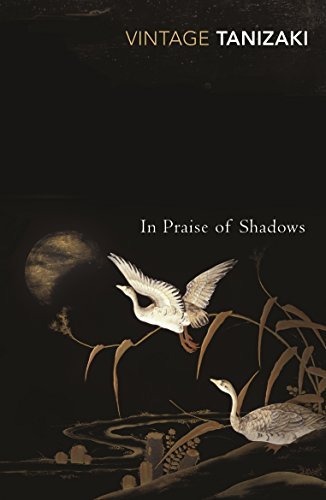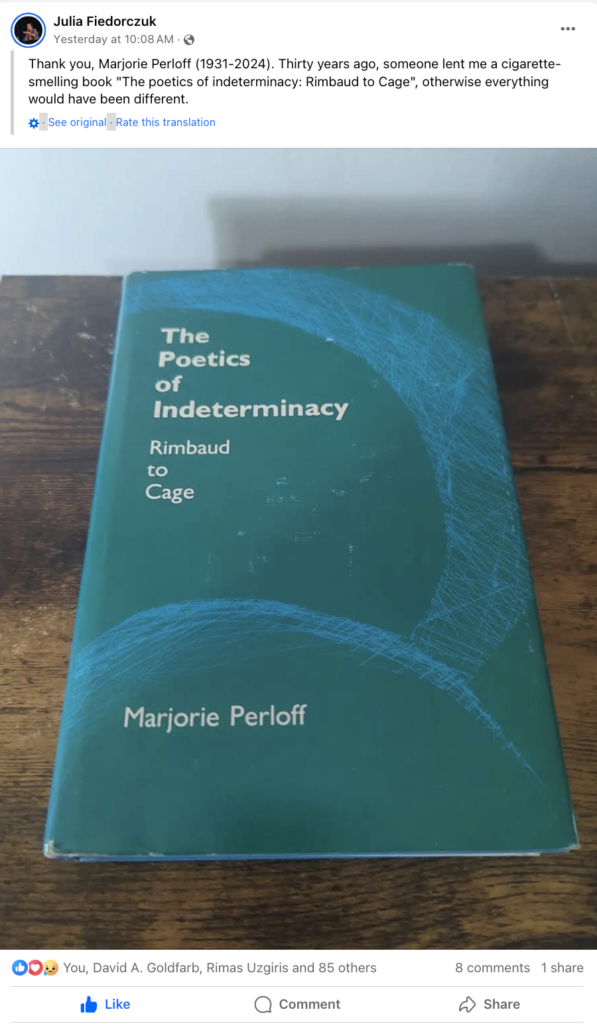How to Think with Robert Pogue Harrison
Wednesday, April 24th, 2024
He’s been called one of the America’s leading humanists, and now he’s taking a step back. Robert Pogue Harrison, Rosina Pierotti Professor in Italian Literature in the Department of French & Italian at Stanford and has formally retired and is now professor emeritus – but thank goodness he promises not to go away! We need him!
The all-day event to celebrate him on Friday, April 19, was intellectually rich and joyous, as everyone would have predicted. But perhaps the talk that might have the most immediate applications in today’s world was Andrea Capra’s lively presentation – “Matters of Ordinary Mentorship or: How to Think with Robert Pogue Harrison.” Mind you, not on learning how to think like Robert, but rather learning how to think with Robert. That might benefit all of us, in academia and out. Andrea, who is Cotsen Postdoctoral Fellow in the Society of Fellows at Princeton, gave permission for us to republish his talk as a Book Haven essay. I think we can all learn something from it – about Robert, and about thinking. Here goes:
One of my most memorable Robert Harrison moments occurred in the second year of my PhD. I had just begun dipping my toes into the waters of academic conferences, and that year, I submitted an abstract for the Canadian Association of Italian Studies. My topic was Beppe Fenoglio’s Una questione privata, a story about love, friendship, and jealousy featuring Milton, a young university student who has joined the Resistenza against the Republic of Salò. With the candor typical of a second-year PhD student, I aimed to unravel, once and for all, the theme of death in this novel. To this end, I was ready to summon a formidable array of concepts gleaned from the readings I had undertaken over the previous two years. With scarce interest for matters of internal consistency and theoretical coherence, my paper began by invoking Derrida’s lecture ‘La différence,’ was carried forward by the winds of Ernst Junger’s essay The Forest Passage, and concluded with a barely hinted—at yet profound, or so I thought—Heideggerian thrust.
In my paper, Milton, the protagonist of Una questione privata, symbolized what Derrida termed faisceau—a complex assemblage which, by possessing the structure of weaving, allows different threads and lines of meaning to diverge in several directions, just as they are always ready to intertwine with others. Indeed, these threads did intertwine—through an act of hermeneutical tailoring, I was the one weaving them together by referencing Junger’s The Forest Passage. In my paper, Milton’s deviation from the structured activities of the Resistenza in order to ascertain whether his beloved one had betrayed him, mirrored what Junger describes as ‘the forest rebel’—an individual whose claim to freedom is, I quote, “an affirmation of one’s desire as destiny.”

But Milton’s story ends in disaster. Fully aware that his plan is doomed to fail, Milton nevertheless carries it forth. He dies, shot, in the midst of the action – and there I thought I had found it. In that act of willed martyrdom, I saw Milton being-towards-death – with all the hyphens in the right place too. There, my Milton expressed, I quote, “one’s ownmost and most extreme potentiality-of-being, that is, the possibility of authentic existence.”
As if I had discovered a magic formula to unveil the unplumbed depths of Fenoglio, I eagerly sent the paper to Robert. Knowing he liked Una questione privata, I was excited to share this theoretical concoction with him. Hours later, after teaching my Italian 103 class, I was on my way to Axe and Palm to grab some lunch when my phone rang. Typically, Robert took no more than a couple of days to read my writings, but I was somewhat surprised that this time, not even four hours had passed. I picked up the phone—and oh boy.
While I shall not disclose the content of that phone call out of a sense of pride, let it suffice to say that within minutes, my hopes of radically changing the reception of Fenoglio’s work had become a relic of the past.
“I did not ignore his comments. They lingered and festered.”
At first, I was baffled by Robert’s strong criticism. His intellectual style is deeply philosophical, which he applies to his readings of literature as well. I believed I was doing just that by weaving in the thoughts of Derrida, Junger, and Heidegger into my analysis of Fenoglio. To my surprise, the parts of my paper that Robert criticized most vigorously were those where I engaged with concepts from these thinkers. However, as everyone who knows me is aware, I can be somewhat stubborn, and so I presented the paper without making any changes. At the conference, nothing particularly bad happened—after all, in the humanities, one can indeed get away with murder, especially as a graduate student in a rapidly shrinking discipline.
While I was stubborn enough not to alter my paper in response to Robert’s critiques, I did not simply ignore his comments. In reality, they lingered and festered—the fact that I am sharing this anecdote with you today is a testament to their lasting impact. You see, Robert and I have had our fair share of intellectual disagreements over the years. Yet, I greatly admire him—his style, his intellect, his generosity, and his straightforwardness. This dynamic of occasional disagreements and enduring respect has fostered an extraordinarily productive intellectual relationship. While Robert never hesitated to critique my Latinate formulations and occasionally Byzantine sentences, given my respect for him I could not dismiss his insights lightly. And I must also add that, as I now know, criticizing a student’s work often requires more time and effort than simply endorsing it—professors sometimes choose the quickest and most frictionless path to conclude a conversation with their students.
But not Robert. And so I kept ruminating on his critique of my paper on Una questione privata. Over time, I realized that Robert’s main criticism wasn’t about my choice of approaching Fenoglio from a philosophical point of view. Rather, the problem was that in my paper Fenoglio was crushed by the theoretical weight of the names and concepts I employed. By relying too much on conceptually dense formulations, I did not promote legibility. Robert wouldn’t describe himself as a Cartesian – and in fact, some of my favorite pages of Robert are those where he describes Cartesians in revolt, such as he does in Forests – but Robert taught me that one’s ideas must be clear and distinct before they can be set free in our communities. This is, after all, an ethical imperative: if our goal is to communicate something, then legibility is key. My ideas, in that paper, were neither clearly nor distinctly conveyed. My use of Derrida, Junger, and Heidegger was obfuscating, rather than illuminating. The point was not to get rid of these thinkers – the point was that I wasn’t using them properly. Instead of carefully moving within Fenoglio’s novel, I was stampeding around, raising a cloud of dust that served no purpose. In fact, that dust prevented my ideas from being clearly seen.

Robert, I believe, was inviting me to rely more on ordinary language, rather than on the hyphenated and Latinate formulations of high-theory. Not because we should dismiss theory – but because theory works at its best when it is at its lightest. Otherwise said, if my words could convey the nuances and insights of Derrida, Junger, and Heidegger without my rookie attempts at parroting their style, then I would be doing a service to my primary source, to those thinkers, and, most importantly, to my audience.
“Contempt for ordinary language is contempt for the humanities.”
It is today my belief that once ordinary language is laughed out of the room, philosophical theories are no longer held responsible at all to the ways we actually speak and actually live. And aren’t the humanities ultimately for a good part connected to how we actually speak and live? To me, it is clear that the descriptions of human life we find in the novels of Samuel Beckett or in the poetry of Giacomo Leopardi are not mere entertainment. In my view, and among other things, they teach us to perceive and describe what goes on in social and individual life. To echo what Hilary Putnam once said, contempt for ordinary language is, at bottom, contempt for the humanities.
Robert’s work – in which I also prominently include his advising role – is a reminder that thinking and living are intimately connected. I am not sure he would speak of “ordinary language” à la Wittgenstein, Austin, or Cavell in relation to this connection. But so what? In the end, this is my way of thinking with Robert – not of thinking like Robert. An intellectual mentor in the trust sense of the term is someone who seeks to develop the voice of his mentee – not someone who wishes to see his own voice replicated.
My understanding of ordinary language philosophy is intimately tied to my work in phenomenology. This too is greatly influenced by Robert’s mentorship. It is with Robert that I truly started getting my hands dirty with phenomenology, and doing something with it rather than simply reading about it. This took place over long office hours and individualized reading sessions – with the most meaningful one probably being a legendary quarter when Robert, Corey Dansereau, and I, read and discussed Peter Sloterdijk’s book Not Saved. Essays After Heidegger.
An invitation to pay attention to the ordinary
I bring together ordinary language and phenomenology for a key reason: isn’t Husserl’s invitation to go back to the things themselves an invitation to pay attention to the ordinary? If we understand Husserl’s sentence as a rally cry to focus on the ways that things are given in experience, and to shift from what he terms a “natural attitude” to a “phenomenological attitude”, then we must for a good part resort to the language of the ordinary – even if just as a starting point. In phenomenology, this shift of attitudes involves a methodological bracketing, known as epoché, which suspends assumptions and judgments regarding a situation to explore the structures of consciousness underpinning it. Yet, in undertaking a transcendental reduction, we must be cautious not to throw out the baby with the bathwater. In other words, by doing phenomenology it is my contention that we build upon the ordinary, rather than dismiss it. This is because ordinary concepts and ordinary words are essential to describe ordinary experiences – in fact, this is what we do all the time.
Let me give you an example of how this may work in practice. As some of you know, I’m currently finishing a manuscript on how horror manifests in literary works not belonging to the horror genre. Why this seeming reluctance towards the horror genre? It’s in fact something different than reluctance – it represents a return to the ordinary. Consider how we already use the word horror beyond the horror genre. In languages such as English, Italian, French or Spanish, the word horror comes already socialized. Perhaps you used this word to evoke the catastrophes unfolding around the globe, such as natural disasters, violations of human rights, or forced displacements. Perhaps it reminds you of the illness that all of a sudden took hold of the life of a loved one. Or maybe, less tragically so, it brings back those couple of truly horrifying minutes that you experienced the last time you flew through turbulence.

In such cases, we may resort to the word ‘horror’ and its derivatives because horror is mundane, widespread, and a facet of our life. Indeed, we use this word to speak about the concrete phenomena of our lives. For these reasons, my manuscript focuses on depictions of, for instance, warfare, poverty, or sexual violence, rather than on zombies, vampires, or masked serial killers. In so doing, I posit that moments of horror are interwoven into the fabric of literature across genres, like the varied experiences we encounter in our lives.
In this project, I reconnect horror to lived experience, while studying its aesthetics beyond the commodified motifs of the horror genre. This rediscovery of horror is achieved through a rereading of the modern Italian canon, showing a literary tradition not associated with horror to be in fact rife with it. To this end, Ireclaim the ordinary word horror in all its power to analyze Giacomo Leopardi’s pages on existential suffering, along with Primo Levi’s writings on Auschwitz, Elena Ferrante’s descriptions of violence, and the works of various other writers.
In pursuing this project, I cannot say that I always followed Robert’s suggestions. And yet, as I’ve been discussing, my thinking on the topic is profoundly affected by Robert’s mentorship. How to make sense of this apparent contradiction?
Perhaps there is no contradiction here. Perhaps the mistake lies in thinking that having Robert Harrison as a mentor involves becoming a Harrisonian – whatever that means. Academia often promotes this type of thinking: model yourself after a successful scholar, who hopefully also serves as your advisor, and depend on that model to secure future employment and a series of publications. This approach, in my view, has led us to The Work of Derivative Scholarship in the Age of Professional Reproduction.
But how can one be a humanist and, simultaneously, fully model oneself after someone else, instead of following one’s own inclinations and intuitions? What a miserable existence lives the humanist who believes that they have to sacrifice their own freedom of thought to appease the whims of the job market, a dissertation committee, or their advisor. It goes without saying that one should be mindful of all these factors, and that structures of power, to not even mention the desire to get a visa or a green card, may influence someone’s choices. But why should one be in this profession—with its dire career prospects, meager salaries, and high demands on one’s own time—if not at least for a good part to take advantage of the freedom that being a humanist entails? Freedom in this context also means choosing one’s subject of study because it is meaningful to one’s life, not because it is prescribed by someone else.
Robert’s profile, in my view, is a testament to the freedom of the humanist. A couple of weeks ago, Robert and I were talking over the phone. He shared that, while already at Stanford, he once received an offer from a very prestigious university in a metropolitan area. Robert told me he seriously considered the offer, until he realized that, under no circumstances, could he live in a labyrinth made of concrete, where nature becomes a distant mirage rather than the backdrop of his life.
With this choice, the author of Forests: The Shadow of Civilization and Gardens: An Essay on the Human Condition affirmed that his work was not separate from his persona, but in fact a constitutive part of it. Robert’s choice of staying in California, in his house surrounded by trees instead of skyscrapers, reflects his philosophical, literary, and aesthetic inclinations. Yes, not everyone has the luxury of choosing between Stanford and another equally prestigious institution. But he did have this choice, and it is for this reason that I regard this anecdote as exemplary of his life, without intending it to be a normative or prescriptive statement.
Nature does most of his deep thinking
Robert once told me that nature does most of his deep thinking. For those of you who know Robert personally, you’ll recognize this as a quintessentially Robert Harrisonesque statement. In the light of the anecdote I just shared, we can see how this statement emanates both from his intellect and his praxis – if Robert didn’t truly believe that nature does most of his deep thinking, he might have moved to that big city, enjoyed urban life, been closer to Italy, and so forth.
I greatly respect this coherence between the way one thinks, and the way one lives. Academia is rife with bad faith, filled with individuals who eloquently write about community, care, attention, or equity, yet behave in ways that starkly contradict their words. They remind me of the philosophers who, as Kierkegaard notes, build a beautiful palace and then choose to live in a miserable tent right next to it. But academia is also a place where one finds those who live in the intellectual palace they have constructed, and Robert Harrison is certainly one of them.
I first met Robert in February 2016, during my campus visit here before officially joining the DLCL. It’s been over eight years, and despite occasional moments of intellectual friction—which I believe are productive—Robert has never once failed to respond to an email, write a letter of recommendation, or engage seriously with my thinking without pulling any punches. Be it directly or indirectly, he taught me not to mystify nor obfuscate, but to promote legibility and clarity. He made me a thinker who is not afraid to look at the ordinary, rather than one who despises it. He encouraged me to go back to the things themselves, rather than being lured by the sirens of abstraction.
Mio caro Robert, miglior fabbro, we’ve been thinking together for eight years, and for all these reasons, I look forward to continuing our intellectual kinship for the next eight years and beyond.












